Saturday Commentary and Review #178
The USA's Managed Elections, Did ICE Import Cartel Cocaine by the Ton?, Ukraine and the Stabbed-in-the-Back-Myth Formation, LOL BRICS LOL, Al Pacino on The Godfather
Every weekend (almost) I share five articles/essays/reports with you. I select these over the course of the week because they are either insightful, informative, interesting, important, or a combination of the above.
…as I was saying………..
I don’t know what is going to happen in the USA on Tuesday. I doubt anyone actually does know. In November of 2016, I was certain that Trump would be denied a victory one way or another. He won and I was proved wrong. Since then I steer as far away as possible from making predictions about US Presidential Elections. I leave that to those who have the time and energy (and especially, patience), to dive in to a pool with a depth similar to that of the Marianas Trench.
There are hundreds of businesses active in the polling and research field, and one thing that they all have in common is that their work is based off of the assumption that these elections are “free and fair” in which cheating (if it does occur) results in nothing but statistical error roundings that don’t really matter. I have my doubts about the absence of cheating/rigging, and I am sure that most of you do too. We all recall 2020 and how that election was “fortified”, producing Joe Biden as a winner. My jaw dropped when Time Magazine let the cat out of the bag in February of 2021, in a long piece that was a victory lap in which they detailed how powerful groups conspired to change election laws in order to tilt the vote Biden’s way.
There are too many polls, too many agencies to consult, too many rabbit holes to go down as you drill-down to the lowest level of voting, and so on. The signal-to-noise ratio makes it deafening to all but the most committed of autists. On top of this you have the potential for widespread fraud, fixing, and cheating hanging over the entire thing. This is why I have no idea what will happen on Tuesday.
So many interests are involved in this process, and there is so much on the line (think about the annual US Federal Budget) that the complexity is too much to handle. Different arms of government operate independently of one another, often at cross-purposes (as you will see in another piece later in this SCR). The US Government is so vast that it is literally impossible to know what all of it is doing.
One thing that we do know for certain is that intelligence agency officials led a public-private conspiracy to suppress information in the run up to the vote in 2020 when they twisted so many arms to quash the Hunter Biden laptop story. That worked, so why wouldn’t they do it again?
Jacob Siegel asks this same question in a much more elegant way than I did, courtesy of this excellent, excellent report on the Censorship Industrial Complex and how it is now working to manage elections and manage democracy itself:
All of which is to say that current efforts to manipulate the American electoral system are not subtle or restricted to working around the law. The Democratic Party’s strategy to win the presidency in 2024 hinges in large part on preventing a normal election from taking place. Procedural and voting irregularities that would have triggered alarm across the political spectrum until recently have become an accepted feature of the landscape. The party has pursued this strategy since 2016, when the Obama White House and the Hillary Clinton campaign worked with U.S. intelligence agencies to frame Trump falsely as a Russian agent. The strategy aims to preserve the ceremony of voting, while constraining its influence, in the same way ideologically motivated bans on “hate” and “misinformation” uphold the appearance of a right to speak, while dictating what can or can’t be said.
Voting is no longer a neutral process….something that was a given up until very recently:
The assumption that voting in national elections is a neutral process that belongs to neither major party but allows American citizens to choose freely between them is, at this point, inaccurate. Americans casting their votes in November will do so within the guardrails of an increasingly managed democracy, designed to grant party elites control over its outcomes. This does not mean that the election’s results are already determined, or that individuals should not vote. No one knows what will happen; even a “managed” election could still come down to narrow margins in a few states. Much space remains between what the elites want and what they can accomplish.
Don’t worry, you’re not crazy for casting doubt on the process as it is being run now:
A decade ago, this might all have been dismissed as the ranting of some far-left or LaRouchean political conspiracy. Today, it describes public events extensively covered by the mainstream press. Shortly after the 2020 election, a breathless article in Time celebrated the “Shadow Campaign That Saved the 2020 Election.” The article detailed “a vast, cross-partisan campaign” that “got states to change voting systems and laws” and “successfully pressured social media companies to take a harder line against disinformation.” More recently, we saw the orderly replacement of President Joe Biden—no longer the “sharp as a tack” geopolitical mastermind depicted in yesterday’s propaganda—with a new Democratic nominee, whose glaring political liabilities were once captioned in a headline by the liberal Atlantic, “The Kamala Harris Problem,” but is now heralded as a political genius. More recently still, in late August, Meta CEO Mark Zuckerberg acknowledged in a letter to the House Judiciary Committee that his company faced regular pressure from senior Biden administration officials to censor Covid-19-related Facebook content, even satire, that the government didn’t like. “I believe the government pressure was wrong, and I regret that we were not more outspoken about it.” Zuckerberg also admitted that Facebook had throttled discussion of the Hunter Biden laptop controversy, after the FBI warned the firm—in a deliberate falsehood—that it was Russian disinformation. (The point person for the administration’s pressure campaign against Meta and other social media platforms was Rob Flaherty, the former Biden White House director of digital strategy, who is now the deputy campaign manager for Kamala Harris.)
What specifically has changed since 2016?
For most of the past century, the country was governed through a system of distributed rule wielded by local parties, individual voters, civic institutions, independent power centers such as the press, and competing regional elites. Over the past two decades, this system has been replaced by one that is highly centralized and dominated by a party of concentrated wealth, state-corporate collusion, and progressive monoculture. Recognizing the long-term trends in digital technology and economic globalization, President Barack Obama and other progressive leaders built a new kind of vertically integrated, national political organization. The key was unifying America’s professional-managerial class and federal bureaucracies with its progressive billionaires, especially those in Silicon Valley, in the mutually supportive structure of a party-state.
The DEI complex is a good example of the above as well, and fits into the larger vision.
This next excerpt is key:
In this new approach, the state initiates “whole of society” campaigns, a term popularized in Obama’s second term. That is, the state enacts policies and then “enlists” corporations, NGOs, and even individual citizens to enforce them—creating a 360-degree regulative power made up of the companies you do business with, the civic organizations that you think provide your communal safety net, and perhaps your neighbors. Any group or individual violating those policies faces censorship, social cancellation, and even denial of access to banking, credit, and other essential services.
Outsourcing to the private sector what the public sector cannot legally do. Think about how social media worked hand-in-glove with the US Government to censor the speech of ordinary Americans.
The four categories that Siegel lists as to how these groups work together to “manage” elections:
These organizations now occupy a quasi-permanent space in the U.S. political and electoral infrastructure. Using this network, the party-state seeks to control elections. A comprehensive review of all the groups, techniques, and actions involved in this endeavor would require an encyclopedia-length book. The aim here is to provide an overview of some of the main lines of effort. These roughly fall into four categories: lawfare, censorship, institutional interference and targeted policy, and information operations.
Check this out:
The shift to legal warfare was foreshadowed in the lead-up to the 2020 race. One notable case involves the Transition Integrity Project (TIP), an election initiative launched in 2019 under the auspices of a different group, Protect Democracy, founded by a team of lawyers who had served as White House counsels under Obama. The project, explained one of its founders, Ian Bassin, grew “out of concern that the Trump administration may seek to manipulate” the 2020 election.
The initiative gathered roughly 100 influential people, including leading Democratic officials, like Hillary Clinton’s campaign chief John Podesta, and members of the media and NGO world, to wargame potential scenarios resulting from a contested election. In one scenario, Podesta, playing the role of Joe Biden, refused to accept a Trump election victory and threatened to seize control over several West Coast states and secede from the rest of the country unless congressional Republicans agreed to demands, including the elimination of the Electoral College. The move was sufficiently egregious to provoke criticism from other participants in the wargame. And yet, according to the TIP report on the event, Podesta’s secession gambit, far from a flight of personal fancy, was carried out “with advice from President Obama.” In a detailed report on TIP’s exercises, Matt Taibbi describes “multiple passages on the subject of abiding by and/or trusting in the law, and how this can be a weakness.”
Wargaming secession is wild!
Siegel goes on to explain that lawfare has failed to totally stop Trump (while tripping up his campaign and tying up his resources), but that this failure does not matter in the long run as it is now a trusted tool to wield against others seeking to reform the system, with RFK Jr. being an example:
McCarthy attributes the alleged failure of lawfare to the backlash it engendered “because it violated our instinctive American sense of fairness,” and to the “overzealousness of the prosecutors” that left their cases vulnerable to legal remedies. This assumes that the American political system of 2024 is the one that existed before the rise of the progressive party-state. Whatever the ultimate disposition of the cases against Trump, his opponents have succeeded in branding him a felon, tying him up in the courts (thus hindering his campaign), and demonstrating that they will wield the power of false arrest against their enemies. The correct measure of lawfare’s defeat is not what happens to Trump now but whether progressives continue to utilize it in the future.
Censorship has been extensively covered here and elsewhere, so I’ll just share this excerpt:
The 2020 election was the most censored in U.S. history. The censorship encompassed both high-profile cases (like the aforementioned suppression of reporting on Hunter Biden’s laptop) and many less visible instances. The coordinating hub of the censorship industrial complex was an organization called the Election Integrity Partnership.
The seeds of the EIP were planted on January 6, 2017, when the head of the Department of Homeland Security, Jeh Johnson, unilaterally placed control over the entire U.S. electoral system, formerly run by 8,000 local election jurisdictions, under the DHS. This extraordinary power grab, little noted at the time, except by state electoral officials who objected to having their authority usurped, applied to more than just voting machines. With just days left in office, amid an atmosphere of Russia-panic, the Obama administration effectively deputized a federal agency to oversee all online speech on national security grounds.
The effects of this takeover are still not widely appreciated, but one result was the establishment in 2018 of a new agency inside the DHS called the Cybersecurity and Infrastructure Security Agency. Its mission: to defend America’s infrastructure from foreign attacks—now including the Internet as a component of its election systems. But having adopted the censorship of disinformation and misinformation as its goal, the agency faced legal obstacles to carrying this out, starting with the First Amendment. To overcome this hurdle, it helped launch the EIP in July 2020 as a consortium of private and nongovernmental groups, empowered to police the Internet for supposed disinformation. In an internal briefing, later leaked to the public, EIP director Alex Stamos noted that the group was created “to try to fill the gap of the things that the government could not do themselves,” as the government “lacked both kinda the funding and the legal authorizations.” The EIP’s officials would repeatedly claim that theirs was an independent body, not a government cutout.
Institutional interference:
Institutional interference and targeted policy, the third line of effort, is the broadest and shares the most with traditional electoral politics. It differs, however, by co-opting institutions and processes whose neutrality is key to civic peace into the realm of partisan politics. The category encompasses actions taken by nominally independent institutions, and by astro-turfed organizations operating under the auspices of neutrality.
In 2020, Mark Zuckerberg’s family spent more than $400 million on the election, much of it going to the Center for Tech and Civic Life (CTCL), a left-of-center nonprofit devoted to election-related issues. Zuckerberg’s defenders claim the money was needed “to plug holes left by the government.” Critics note that it was overwhelmingly spent in battleground states that Democrats had to win. The conservative think tank Capital Research Center found that the CTCL “consistently gave bigger grants and more money per capita to counties that voted for Biden.”
The spending came with strings attached. The CTCL used the Zuckerberg millions to issue grants to local election offices, with stipulated conditions for how the money could be used. Included in CTCL’s demands: local offices had to promote “universal mail-in voting through suspending election laws, extending deadlines that favored mail-in over in-person voting, greatly expanding opportunities for ‘ballot curing,’ expensive bulk mailings, and other lavish ‘community outreach’ programs that were directed by private activists.”
Lastly, information operations:
The most elusive of the party-state’s strategies, information operations are also the most characteristic of its distinctive approach to politics. These are the continuous manufacturing of pseudo-events and “current things” that define the contemporary psychic atmosphere and distinguish it from earlier epochs in America’s political life. Using trusted government sources to plant stories in newspapers, injecting tropes online by seeding them into the digital networks of social media influencers (isn’t J. D. Vance, like, so weird), shadow-regulating search-engine algorithms to determine what kinds of stories appear in a person’s feed, pressuring social media firms to amplify certain stories, thereby generating network effects—all fall under the broad banner of information operations.
Siegel concedes that his report is not comprehensive, nor even anywhere close to it, as the efforts are so massive and broad that they could fill an entire encyclopedia.
He makes an excellent case as to why no one can know what is going to happen on Tuesday.
Investigative journalism is not dead yet.
It’s expensive, time-consuming, and can put your publication into serious legal trouble. For many, this is enough of a reason to stay far away from it. Who wants to upset the government and invite the Eye of Sauron down on them?
Not too long ago, there were quite a few people and publications that were brave enough to risk such attention. Those numbers have dwindled, but every so often investigative journalism will stick its neck out and show us its true worth: lifting the veil off of what goes on in the shadows.
Almost all the content that I share in my SCRs are to do with current events, but this one covers 2004 to 2007. The reason why I am sharing this with you is to highlight how different arms of the USGov often act independently of one another, sometimes even during “cross-agency” efforts like the one between ICE and the DEA (and most likely the CIA too) that was called “Operation Mayan Jaguar”:
A Rolling Stone investigation into thousands of pages of government documents, flight logs, court filings, and local news reports across the Western Hemisphere confirmed there was a secret ICE operation. It was called Mayan Jaguar. According to classified reports, ICE bought private planes from 2004 to 2007, intending to tag them with hidden tracking beacons and, through front companies like Donna Blue, sell them to drug traffickers. The beacons were supposed to lead ICE to wherever in the world the planes might land, and ICE was supposed to work rapidly, presumably with local authorities, to arrest traffickers and seize drugs before they hit the streets. If all went according to plan, Operation Mayan Jaguar would be a vast, synchronized sting across the drug war’s hottest hot-spots.
It didn’t work out that way.
After the crash, the Department of Homeland Security’s Office of Inspector General began to investigate allegations of “narcotics smuggling operations under the auspices of ‘Operation Mayan Jaguar,’” according to IG reports obtained by Rolling Stone. The alleged government smuggling took place “with the consent of special agents from the ICE office in Tampa [Florida].”
Alright, so what actually happened?
The reports show that ICE agents would draw “approximately 20 planes” into Operation Mayan Jaguar, including a Boeing 727. And according to testimony in the reports and the prosecutor in Malago’s case, ICE stopped none of them, while other governments thwarted some, without ICE — meaning the operation may have morphed into a FedEx for cartels. The Drug Enforcement Administration, convinced that traffickers controlled Mayan Jaguar, ordered ICE to shut it down, an ICE agent told the IG. ICE refused. “ICE Headquarters advised the agents … to continue working,” according to another agent’s IG testimony.
In court, Malago’s representatives would say that ICE trapped an innocent man in a turf war with the DEA. “Mr. Malago is stuck in the middle between the United States Government and alleged rogue governmental agents turned criminals,” Ratzan, his lawyer, wrote in court filings. The charges against Malago would eventually be dismissed, and no one else has been charged. ICE declined to comment.
These planes were moving cocaine for the cartels and ICE refused to shut down the operation after the DEA demanded it do so.
These turf struggles between US Government agencies reminds me of the civil war in Syria and how the Kurds (US DoD proxies) ended up fighting various CIA-backed jihadis in the north of the country.
But IG investigators gathered unsettling testimony that allows the full story of Mayan Jaguar to be told for the first time. Even inside ICE, they found disquiet. ICE’s own auditors had “identified significant control weaknesses which included ‘serious’ deficiencies in recording transactions,” according to an IG memo. “The operation was missing receipts or invoices for over $3 million in expenses related to the purchase and sale of airplanes.” An ICE agent under interrogation assured the IG that the audit for the final year, 2007, was “clean.” But why were ICE auditors “not provided information” about Donna Blue and its Gulfstream II for that “clean” audit? The agent “said he didn’t know.” ICE, it seems, hid the Gulfstream from itself.
No smoking gun is revealed in this story, but there is quite a lot of smoke.
In the beginning:
In the summer of 2004, according to an ICE agent’s account to the DHS inspector general, Tampa ICE began holding meetings to hatch Mayan Jaguar. They planned to “find foreign clandestine labs, identify smuggling routes, and intercept smuggled narcotics” in the U.S. and other countries. ICE was only a year old, a merger of U.S. Customs with the Immigration and Naturalization Service, under the newly established Department of Homeland Security. And Operation Mayan Jaguar would be “a coordinated interagency task force developed by the intelligence community,” according to an internal ICE memo, indicating other players were involved.
“…a coordinated interagency task force developed by the intelligence community.”
Secrecy and competing claims still shroud Mayan Jaguar, although there’s agreement that it was out of control. Ratzan, Malago’s lawyer, would say the campaign swept up drugs and traffickers, while her replacement on the case, Frank Quintero, acknowledged that ICE — not his client — broke rules. But the worst-case scenario is ICE-as-cartel. Mayan Jaguar “was and is a black eye,” says a former federal official whose work has intersected with elements of Mayan Jaguar. “The agents did something they shouldn’t have done. The government did not do what it was supposed to do. There were allegations the agents were running the dope themselves, literally getting paid for bricks that they were moving themselves,” likely by the ton.
The US Government running drugs for cartels shouldn’t surprise anyone. It’s public knowledge how the CIA worked with cartels who were moving cocaine into the USA by the ton. Why shouldn’t ICE get in on the action?
This was a very interesting (and long) read. Click this link to read the rest.
The failure of the 2023 Ukrainian Counteroffensive meant that maximalists in the USA were no longer in control of US policy regarding the War in Ukraine. They shot their best shot and came up short. Ukraine would not be able to liberate all of its occupied territory, and regime change in Moscow was off of the menu.
Since then, the Americans have fallen back onto the original plan: bleed Russia as much as possible.
They have been bleeding Russia, but this too is failing for the simple reason that the Ukrainians are bleeding much faster than the Russians, to the point where the front is now seeing the most movement it has seen since the Russian withdrawal from Kharkov region. In fact, the UAF is experiencing something close to a collapse along the front in Southwestern Donetsk:
The capture of Avdiivka and Ugledar have opened up this part of Donetsk to the Russians, so much so that they are capturing villages, settlements, and even towns daily now. They have moved so far to the west that they are reaching the final zones of high-density population. Should they capture Pokrovsk and Velyka Novosilka, all that stands in the way between them and the Dnieper River is seemingly-endless flat farmland.
Everyone is now focused on the election in the USA, as the consensus seems to be that a Trump win will see a policy change regarding the War in Ukraine. I am not certain that this will be the case, but I am not in charge of consensus-making, and I cannot control what others are worried about. As it stands right now, there is no way for Ukraine to win this war on the ground, and the options to frustrate Russia’s increasing tempo are fewer than they have been since the beginning of this conflict. Both the West and Ukraine are ready to negotiate (despite some public denials), but it seems like the Russians for the moment aren’t. If events proceed along this current trajectory, Ukraine is going to lose a lot of land and the USA, NATO, and the West is going to look very bad.
All losses invite recriminations, and the UK foreign policy establishment is getting ahead of the game by cobbling together its own “stab-in-the-back” myth:
Ukraine faces a precarious future amid waning Western support. The immediate peril comes from the 2024 US presidential election, but the fundamental problem has been the failure of Europe to commit to the defeat of Putin’s invasion.
It’s Europe’s fault, of course. This aligns perfectly with US ambitions, as it wishes to lay the Russia problem on its doorstep so that it can focus on China.
Fear of a Trump Planet and a negotiated end to this war:
The forthcoming presidential election in the US represents the point of maximum danger. A win by Donald Trump could see him placing a phone call to Russian President Vladimir Putin as early as 6 November. Any such call would set expectations of a negotiated settlement, with discussions possibly beginning in the early months of 2025.
Nobody should want this war of ‘meat grinder’ savagery to continue a day longer than necessary. However, Zelensky would have much to fear from a deal negotiated by Trump. The 2020 Doha Accords with the Afghan Taliban have been described as the worst diplomatic agreement since Munich in 1938. Fortunately, Trump was prevented from reaching a similarly disastrous deal with Kim Jong-un of North Korea.
In any such deal, Zelensky would be unlikely to secure the recovery of Crimea and the Donbas, reparations for the massive damage to his country, war crimes trials or membership of NATO. He might be able to bargain the Kursk salient in return for control of the Zaporizhzhia nuclear power plant. But, without NATO membership and its Article 5 guarantee, there would be nothing to stop Putin from continuing the war after a couple of years of recovery and rearmament.
“Nobody should want this war of ‘meat grinder’ savagery to continue a day longer than necessary” is by far the best bit, as the Brits have been the most vocal in wanting it to continue.
When all else fails, blame Europe:
However, it would be misleading to blame everything on Trump. There have been plenty of prior indications of trouble ahead.
US support has always been too little, too late. Given the sheer scale of Washington’s military support this might sound absurd, but President Joe Biden’s hesitancy in allowing Storm Shadow missiles to be used against targets inside Russia is indicative of a general trend. As the head of a global superpower, Biden has always had one eye on ensuring that the war does not get out of hand and become nuclear. The result has been that Ukraine feels it has been given enough not to lose but not enough to win.
In Europe the support has been varied. Some countries, such as the Baltics, the Scandinavian states, the UK and Poland, have done better than others. Hungary has been hostile, and may soon be joined by Slovakia and Austria. Germany has provided the most weapons but has been politically unreliable. Its refusal to supply Taurus missiles and its public debate about reducing its defence budget have sent all the wrong messages. German companies continue to retain significant interests in Russia, and the advance of Alternative for Germany in elections in Thuringia, Saxony and Brandenburg reminded Chancellor Olaf Scholz that there is little support for the war in Eastern Germany. President Emmanuel Macron of France, having been mercurial about Ukraine from the outset, received a similar jolt from the far left and far right in legislative elections in July.
This bit is great:
The most visible sign of a failure of collective determination to defeat Russia was the decision not to seize Russian financial assets frozen in Western banks, but instead to use them as collateral to raise a much smaller loan. Yes, there would have been a theoretical risk of undermining faith in the Western-dominated financial system, but few countries are yet ready to entrust their savings to Chinese or Indian banks. Furthermore, it would have sent a message to Putin not to invade other countries.
“Yes, there would have been a theoretical risk of undermining faith in the Western-dominated financial system” is classic British understatement.
What would a betrayed Ukraine look like? At least it would retain some 82% of its territory. A guilty West would doubtless provide aid to rebuild infrastructure. It might be given a pathway to eventual EU membership (unless that option had been bargained away at the negotiating table), but joining the Western club may have lost its appeal at that point. Ukraine’s corrupt oligarchs would re-emerge from hibernation. The old post-Soviet cynicism would replace the youthful enthusiasm of the Maidan generation. There would be antagonism towards those returning from abroad after avoiding the fight, and – of course – thousands of grieving families.
This should have been Europe’s war to manage. In spite of decades of discussion about European defence, it proved too convenient to rely on US largesse. This made Europe a prisoner of US electoral factors. It also caused Europe to shirk the difficult decisions that helping win the war entailed: the big increases in defence expenditure, the 24-hour working in ammunition factories, the hikes in food and energy costs and the political risks such as seizing frozen assets. What remains now for Europe is to secure a place at the negotiating table and to argue for NATO membership for Ukraine as part of any settlement.
Failing that, the West will have years to repent the betrayal of the courageous Ukrainians, whose only crime was their wish to join the Western democratic order.
This British ex-diplomat is politely suggesting that Europeans man the front lines in Ukraine for when they and the Americans launch a future war by proxy against Russia.
It’s not the most popular subject on this Substack, but BRICS is important….at least in terms of debate.
I promise all of you that I won’t be writing too much about it (unless circumstances change, of course) for the foreseeable future for the simple reason that the big BRICS summit in Russia was pretty much a bust:
BRICS Summit host Russian President Vladimir Putin disappointed both anti-colonial enthusiasts and Western alarmists last week by conceding that the bloc’s members “have not built and are not” building a payment system to challenge the US dollar-based global banking system.
The leaders of the two economic giants present at the summit, China’s Xi Jinping and India’s Narendra Modi, did not mention alternative payment arrangements in their respective remarks.
The technical requirements for alternative payment systems aren’t the problem. The SWIFT system that controls interbank payments in dollars and other major Western currencies merely transmits secure messages.
The challenge, rather, is economic: US demand for imports fuels an outsized portion of economic growth in the Global South. China’s exports to the US amount to just 2.3% of its GDP, but about half of its surge in exports to the Global South since 2020 depends on re-exports to the United States.
While China’s exports to the Global South more than doubled from about US$60 billion a month to $140 billion a month, US imports from the Global South rose from about $60 billion a month to $100 billion a month during the past four years.
Not only is a BRICS currency not happening, a BRICS payment system to rival SWIFT isn’t even in the works. Goldman goes on to argue that the US market for exports is simply too important and attractive for the Global South to upset the USA. This makes sense.
Dependence on the US market varies widely across the universe of developing countries. Vietnam and Mexico, the two favorite venues for so-called “friend-shoring,” that is, transferring production away from China to putatively friendlier countries, registered big increases in exports to the US as a share of GDP.
Vietnam’s exports to the US in 2023 amounted to about 27% of the country’s GDP, compared to just 10% in 2020, while Mexico’s US exports rose to 27% of GDP in 2023 from 20% in 2010.
Singapore and Malaysia, by contrast, showed little increase in US exports as a share of GDP. Indonesia and Brazil export comparatively little to the United States.
more:
What makes the United States such an important factor in the economies of the Global South is its enormous current account deficit. The table below ranks the current account surpluses and deficits of the 20 largest economies from the largest deficit to the largest surplus.
With a current account deficit of $80 billion a month, or $1 trillion a year, the US appetite for an excess of imports over exports dwarfs the rest of the world.
China is the largest or second-largest economy in the world, depending on whether we count GDP in US dollars or adjust for purchasing power parity, but China’s imports from the Global South have been stagnant for three years.
China won’t replace much of American import demand for the time being, given Beijing’s focus on high-tech investment rather than consumer demand. At the margin, that leaves the Global South all the more dependent on the US.
Projecting current trends into the future suggests a steady rise in consumer spending in the Global South, especially in East Asia, and the emergence of robust domestic markets and less dependence on exports.
Also, no one wants Rupees, Roubles, or the Remnibi. Everyone puts US dollars, Euros, or gold in their national reserve funds:
Developing countries, though, don’t pay their bills on projections. Arranging payments for goods in international trade is a trivial issue. More challenging is financing long-term deficits.
India, for example, used to run an annual trade deficit with Russia of less than $3 billion. Discounted Russian oil sales to India after the start of the Ukraine war boosted this to more than $60 billion.
What will Russia do with the Indian rupee equivalent of $60 billion? It would far prefer to have another currency, for example, the UAE dirham, that can be used to buy goods in third markets.
The Global South doesn’t yet have the capital markets or the currency stability to convince a surplus trading country to simply hold assets of the deficit country in exchange for goods.
That is what the United States does so well: Its $18 trillion negative net foreign asset position corresponds to the last 30 years’ cumulative current account deficits.
America sells assets to foreigners in return for their goods. The Global South doesn’t have the assets to sell, or at least not in the form that the rest of the world would like to own.
and:
BRICS central banks don’t hold each other’s currencies as reserve assets, with limited exceptions. Just 2.3% of world central bank reserves are held in China’s RMB, up from 1.1% in 2016 but down from a peak of 2.8% in 2022. Most of them are buying gold. If the legend on US currency states, “In God We Trust,” gold says, “Trust nobody.”
BRICS is a paper tiger and will continue to be one for the short and mid terms.
We end this week’s SCR with Al Pacino reflecting on the making of The Godfather, and how he almost got fired during its filming:
Before we started shooting, I got together with Little Al Lettieri, who was going to play Sollozzo. He just said to me, “You should meet this guy. It’s good for what you’re doing.” I sort of knew what he meant by that, so I went along with him. One day we took a drive to a suburb just outside the city.
Little Al brought me to a traditional, beautiful, well-kept home. He took me inside and introduced me to the head of the household, a guy who looked like a normal businessman. I shook his hand and said hello, and he was very welcoming. He had a loving family. He had a wife who served us drinks and light snacks on fine porcelain. He had two young sons around my age. I was just some crazy actor who had come into his house, trying to absorb as much as I could. Our conversation remained polite and at the surface level. I never asked Little Al why he had brought me here, but I thought about what he had said before we came, how this visit would be helpful for what I was working on. Little Al knew some guys. Some real guys. And now he was introducing me to one of them.
I was being given a taste of how this thing looked and operated in reality, not how it was shown in the movies. Not that our host was going to get into any of those details with us. As a matter of fact, we ended up drinking and playing games. Many moons later, photos from that night surfaced, showing me in a sweatshirt, laughing away with a drink in my hand, while Little Al showed me a gun. A boys’ night out.
I was a kid from the South Bronx. I am an Italian. I am a Sicilian too. I knew what it was to always be assumed that you had at least a connection to organised crime. Any name that ended with a vowel was scrutinised for having possible connections to that world. Instead of being compared to Joe DiMaggio, you were associated with Al Capone.
Most of us will never experience crime, let alone perpetrate it. And yet we’re fascinated with these people who are determined not to live within the rules of society, who are finding another way to go. The outlaw is a particularly American kind of character. We grew up pretending to be Jesse James and Billy the Kid. These were folk heroes. They became part of our lore. The history of the mafia is part of that lore too.
Fun read! Click here to read it in its entirety.
Thank you once again for checking out my Substack. Hit the like button at the top or the bottom of this page to like this entry, and use the share and/or res-stack buttons to share this across social media. Leave a comment below if the mood strikes you to do so. And don’t forget to subscribe if you haven’t done so already.
And don’t forget to join me on Substack Notes!




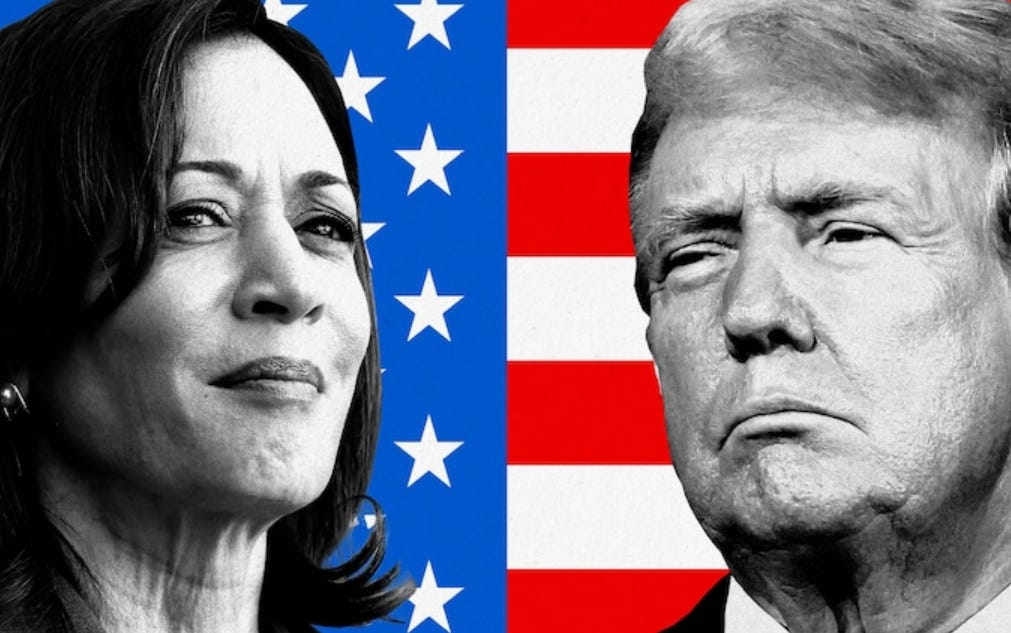
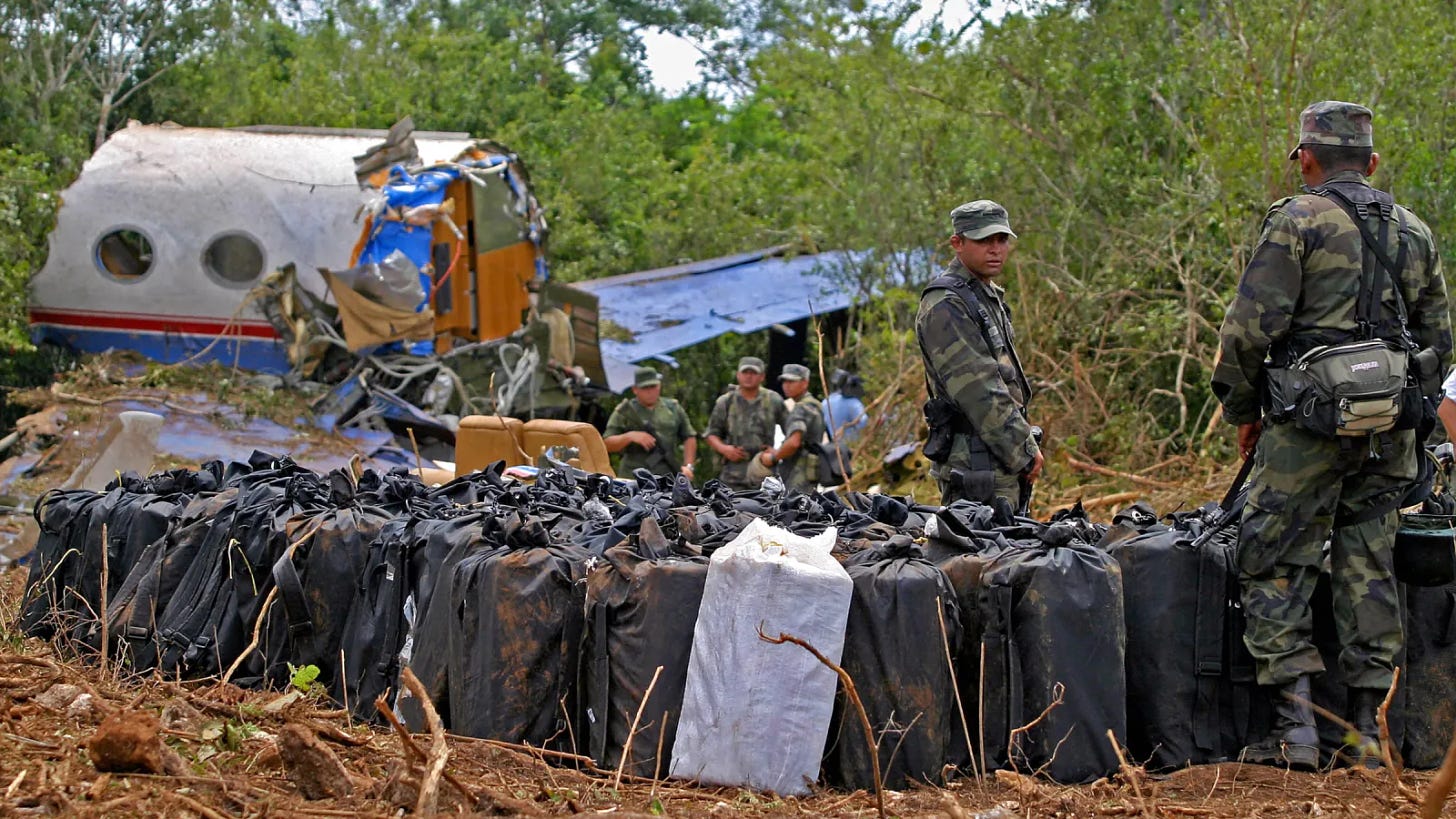


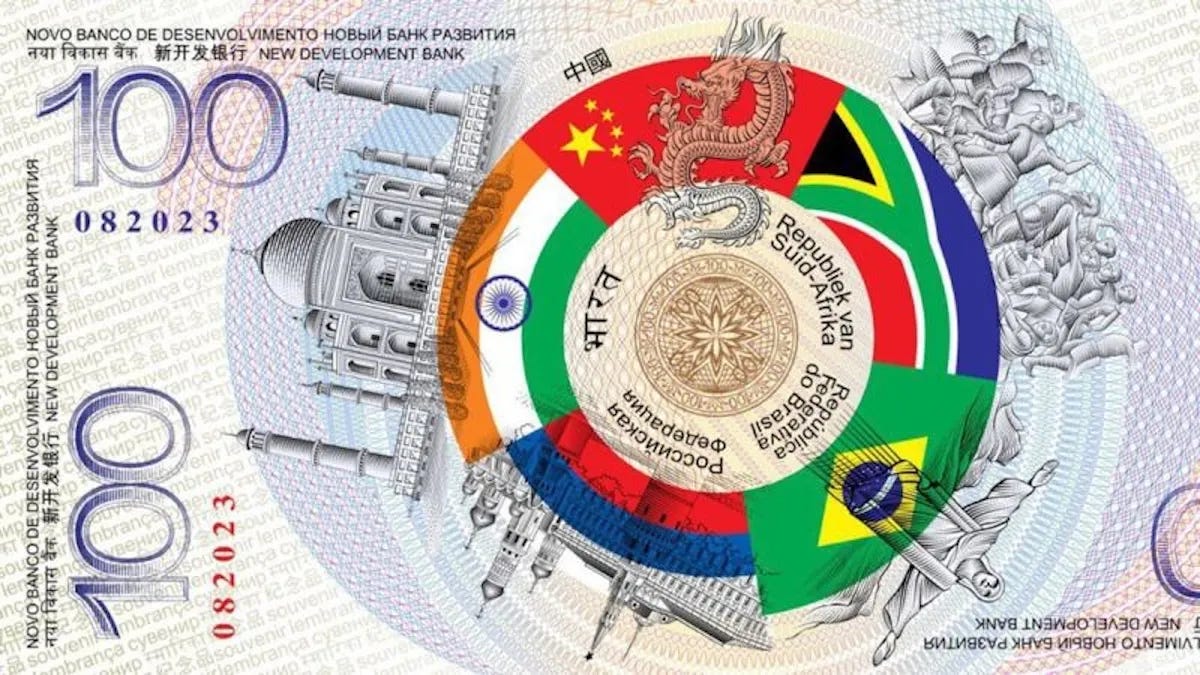
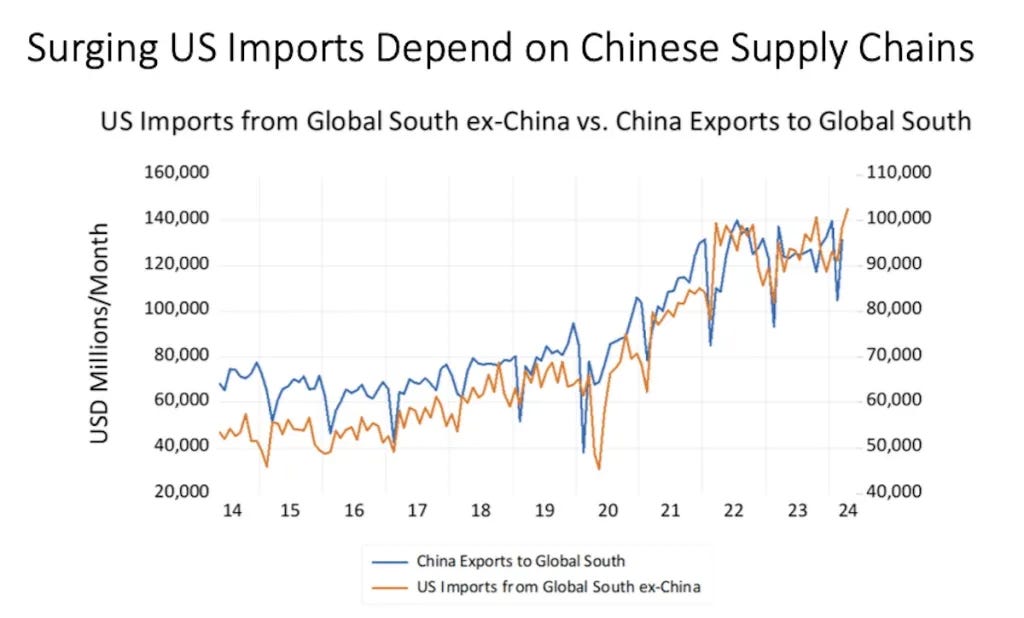
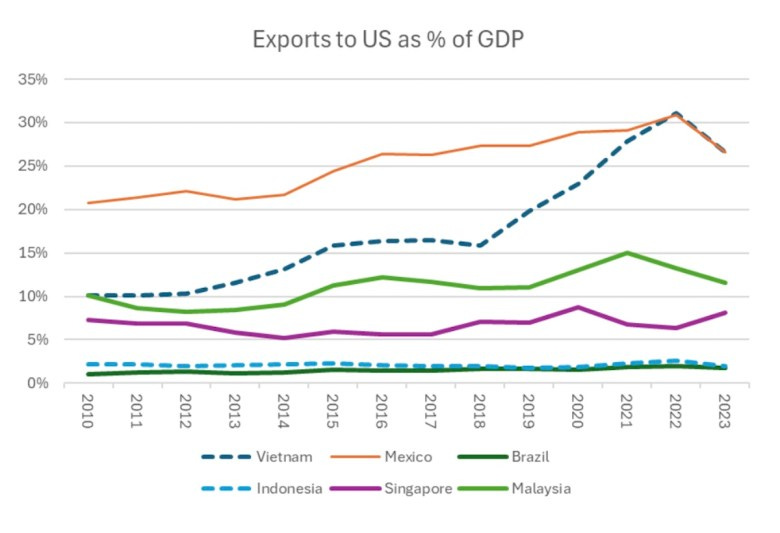
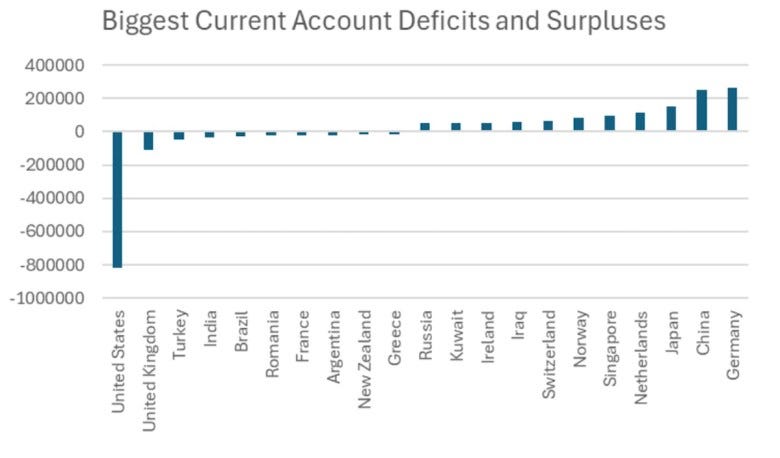
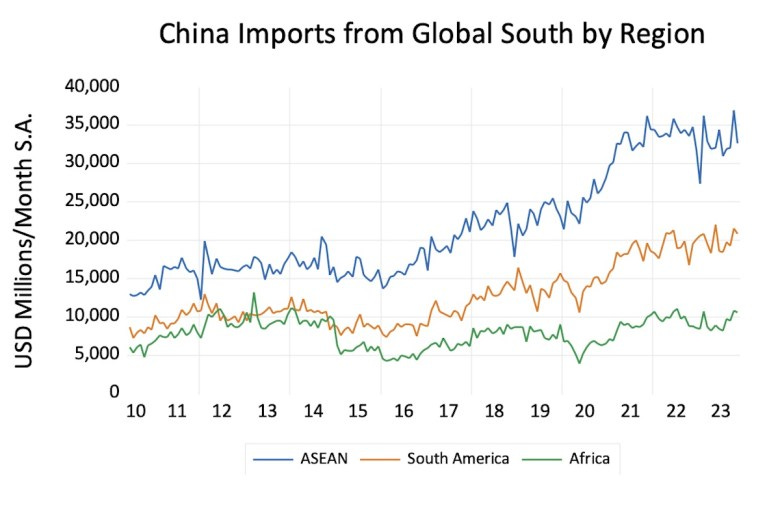


Hit the like button at the top or bottom of this page to like this entry. Use the share and/or re-stack buttons to share this across social media. Leave a comment if the mood strikes you to do so.
And please don't forget to subscribe if you haven't done so already!
Funny how many focus on the complicated issues around voting integrity but rarely accept the fact that electronic voting machines are closed source and easily modified by the companies that make them. Heck, you don't even need hacking, as the company can do it themselves easily.
When I hear these stories that fail to address that electronic elephant in the room, it makes me think that they're doing this on purpose to create more fear porn.